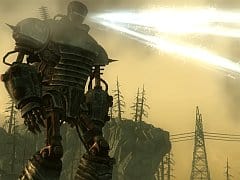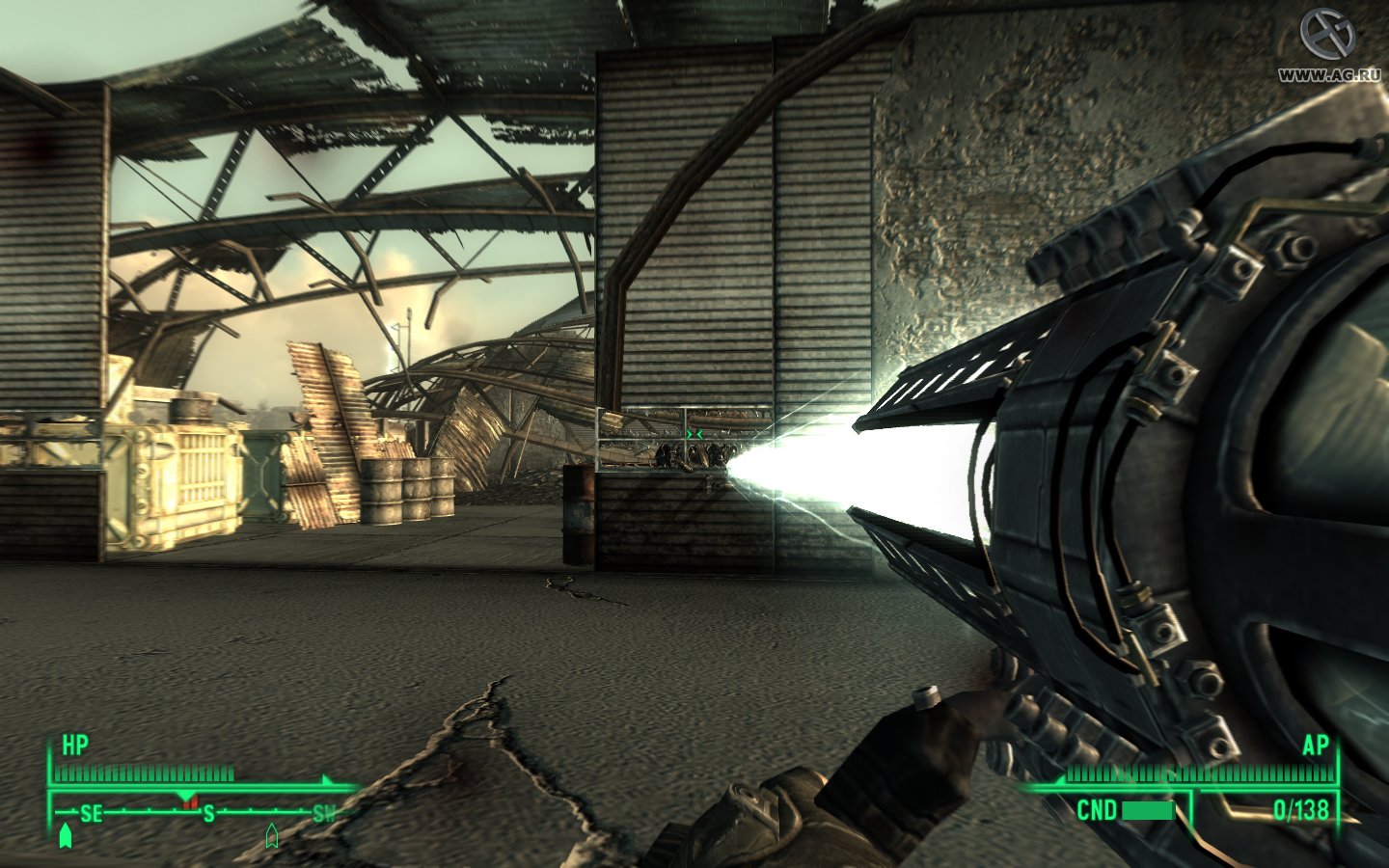You can trust VideoGamer. Our team of gaming experts spend hours testing and reviewing the latest games, to ensure you're reading the most comprehensive guide possible. Rest assured, all imagery and advice is unique and original. Check out how we test and review games here
IMPORTANT NOTICE! The following review contains SPOILERS relating to the ending of Fallout 3. Consider yourself warned.
Everybody loved Fallout 3 for different reasons. Some loved it for its morally ambiguous quest lines. Some loved it for its gruesome VATS system. Some loved it for the Fat Man. Me? I loved it for the world. Fallout 3’s post-apocalyptic Washington DC was a joy to explore. It was a joy to survive in. So huge was the city that, even after pumping 90 hours into hunting down as much of its virtual innards as possible, there were still scores of locations on the map yet to be revealed. For me, the Capital Wasteland was the star of the show. From its wonderfully depressing retro-futuristic design to the feeling of dread you get from creeping about the underground Metro tunnels, Fallout 3, perhaps more than any other game ever released, had a truly immersive living, breathing, convincing world.
However, it was not without its problems. For some the many bugs were of most annoyance. For others, the tone of the dialogue grated, at least in comparison to the previous two Fallout games. For me, the two biggest problems with Fallout 3 were the low level cap (it was set to 20, reached all too quickly) and the frankly awful ending (cue spoiler alert).
At the end of Fallout 3 you were forced to make a choice: sacrifice yourself by venturing into a radiation-filled chamber to turn on a water purifier that would fill the Wasteland’s basin with clean water (or sabotage it), or get your buddy, a Brotherhood of Steel knight called Sarah Lyons, to do your dirty work for you. As far as RPG quest decisions go, it wasn’t too bad. But… BUT… if you had as your companion the great big super mutant Fawkes, the decision seemed obvious. As a super mutant, Fawkes was immune to radiation. Great! Talk to Fawkes and send him in. Everybody lives. Everybody goes home happy. Right?
Wrong. If you asked Fawkes to activate the purifier, he would refuse, spouting some nonsense about it being your destiny to do it yourself. What a load of rubbish. With Broken Steel, Bethesda’s third round of premium downloadable content, Bethesda has righted both those wrongs. It’s upped the level cap to 30, introduced a raft of new perks and Achievements in the process, and fixed the ending so that, yes, you can send Fawkes into the radiation-filled chamber, just as you should have been able to do in the first place.
Broken Steel is evidence that Bethesda admits it got the ending of Fallout 3 wrong. But I’m not going to sit on that point: at least it’s done something about it. How many developers out there are willing to invest as much in extending the life of a game as Bethesda? It might not have got it right with Operation Anchorage (combat-heavy snorefest), but it damn-well got it right with The Pitt (wonderfully atmospheric journey into post-apocalyptic Pittsburgh). If nothing else, Broken Steel shows just how well learned those lessons have been.
A few minutes after loading a game save you’ll get a message that Broken Steel has been activated and the level cap has been raised. Now, if you’re level 20, like I was, and have completed Operation Anchorage and The Pitt without gaining any extra experience points, the first thing you’ll want to do is kill something just so you can hear that lovely “kerching” sound that comes with experience gain. Once the novelty is over, you have a choice. You can get on with whatever it is you were doing, and that includes Operation Anchorage and The Pitt (if you’ve been hanging on for the level cap raise to do them, go ahead and go!), or you can get stuck in with the new, improved endgame quest line.
To do this, you’ll need a game save that‘s not far off the previous end of the game, when Liberty Prime (the giant commie-hating robot) leads an assault on the Enclave-held purifier. When it comes to making that decision, do whatever you want – you wake up two weeks later in the Citadel, the home of the technology-obsessed religious cult the Brotherhood of Steel.
The Brotherhood’s spent the last fortnight mopping up the remnants of the Enclave. Things are going well, so well, in fact, that the Brotherhood want you to join in on a final assault, with your pal Prime, to wipe out the Enclave once and for all. Once I was back on my feet I did a little exploring. There’s been the odd change in your absence – large canisters filled with clean water are being distributed by the Brotherhood to all who need them, including Megaton and Rivet City. Indeed there are crates packed with the stuff – radiation-free hit point recovery, who’d have thought.
There are a couple of side quests to sink your teeth into, one involving Megaton and the other Rivet City, if you fancy a distraction. While they’re decent-enough, don’t expect anything groundbreaking – 90 per cent of the NPCs in the Capital Wasteland have exactly the same dialogue options as before. Your hard work saving the world, it seems, has gone unnoticed by many.
The meat, however, is in helping the Brotherhood finish off the Enclave, and it’s in doing this that you’ll encounter the handful of new enemies and locations that Broken Steel brings. There are Feral Ghoul Reavers (much tougher armour-wearing Ghouls), Super Mutant Overlords (a step up from Super Mutant Masters), Enclave Hellfire Troops (which carry fire-resistant armour and the mortar-like Heavy Incinerator) and one or two surprises that I won’t spoil. On the location front, there’s the new Powerworks to explore, a new Metro Line to soldier through and an Air Force base where everything comes to a head.
The environments aren’t fundamentally different to what you’ve seen before (although the Air Force base has trees!), but working your way through the new quest line feels like a cross between traditional Fallout 3 questing and combat-heavy scenarios reminiscent of Operation Anchorage. Now before you reach for your pitchfork, don’t worry, the combat isn’t shackled as it was in Operation Anchorage. Much of it takes place in buildings and environments within the map. Some areas are new, some are reused, and there’s a dash of off-map travelling, but the point to make is that the combat is, unmistakeably, much better. Because the level cap has been raised and because you’re up against tougher enemies, it feels more like the game did when you took your first tentative steps into a Metro tunnel, or explored an abandoned building for the first time.
At the end of the quest line Broken Steel does something quite interesting. As before you’re presented with a choice, a genuinely massive one, too, akin to the “shall I nuke Megaton?” decision you made at the beginning of the game. Who cares? I hear you cry. The game’s finished after the decision’s made anyway. Actually, it’s not. At the end of the Broken Steel quest line you’re thrust back into the Wasteland, free to go about your business, wrap up any unfinished quests, explore any previously unexplored areas – do whatever you want. But you’re going to have to do it with the Capital Wasteland showing the effects of the decision you made.
So, Broken Steel is great, almost by virtue of it extending the life of an already tremendous game with content that satisfies. It rights Fallout 3’s disappointing ending, provides a new quest line that wraps things up nicely (and is of similar length to The Pitt) and, crucially, increases the level cap by an impressive 10 levels (levelling up isn’t quick, either. I was 24 by the time I’d finished the quest line). But it’s by no means perfect. The new perks seem to concentrate on giving players the chance to fill in the blanks in their stat sheet. ‘No Weakness’ is a case in point. It instantly brings all S.P.E.C.I.A.L. stats that are less than five, up to five. Rather than providing perks that help you specialise more in certain areas – stealthy melee fighters, charismatic small guns specialists, for example – Bethesda seems to feel that players want to be maxed out in almost everything, which is a bit of a shame, because it depresses individual play styles somewhat. That I took the opportunity on odd levels to take some perks I’d skipped as I was levelling up to 20 exacerbated this feeling.
More interestingly, there are three perks that allow you to reset your karma. Devil’s Highway allows you to instantly set your Karma to very evil, Karmic Rebalance instantly sets it to neutral and Escalator to Heaven instantly sets it to very good. If you’ve been a Miss Goody Two-Shoes for 20 levels, like I had, and fancied a stab at this being evil lark, now’s your chance.
Broken Steel suffers from many of the problems the original game did (I encountered some hilarious bugs and glitches, as well as some not so hilarious game crashes) and some that seem endemic to Bethesda (the PC version was broken (ahem) on release). This, coupled with the disappointing new perks prevents the add-on from a perfect score. But, overall, Broken Steel can’t be considered anything other than an excellent addition to the Fallout 3 universe. Put simply, if you love Fallout 3, Broken Steel is an essential purchase.

/https://oimg.videogamer.com/images/9719/fallout_3_broken_steel_12.jpg)
/https://oimg.videogamer.com/images/a7d7/fallout_3_broken_steel_10.jpg)
/https://oimg.videogamer.com/images/57e4/fallout_3_broken_steel_9.jpg)
/https://oimg.videogamer.com/images/6782/fallout_3_broken_steel_8.jpg)






